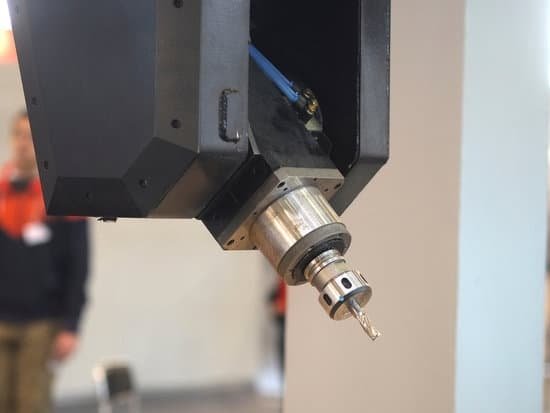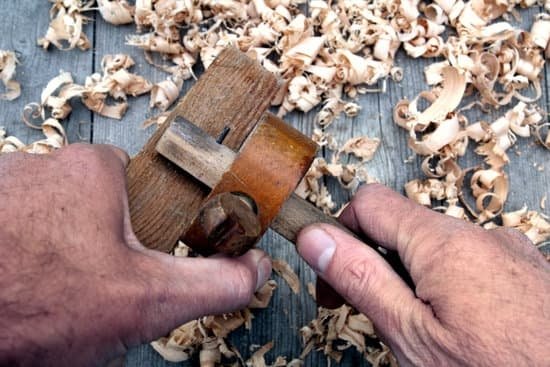Hand planes have been essential tools in woodworking for centuries, allowing artisans to smooth and shape wood with precision. Whether you’re a seasoned woodworker or just starting out, understanding the role of a plane is crucial in creating high-quality projects. A plane for woodworking is an indispensable tool used to shave thin layers of wood, providing a smooth and flat surface.
Hand planes come in various types, each designed for specific tasks in woodworking projects. From smoothing planes to jack planes and block planes, choosing the right one for your project can make a significant difference in the outcome. Understanding the anatomy of a plane is also essential in maximizing its functionality and achieving desired results.
When selecting a hand plane for your woodworking needs, factors such as the type of wood being used, the desired finish, and the specific task at hand should be taken into consideration. Learning how to properly use a hand plane is crucial to achieving precision and accuracy in your work. By mastering techniques such as adjusting blade depth and controlling grain direction, you can enhance your woodworking skills and create professional-grade projects.
Types of Hand Planes for Different Woodworking Projects
Hand planes are essential tools in the woodworking industry, designed to shape, smooth, and straighten wood surfaces with precision and accuracy. When it comes to different woodworking projects, there are several types of hand planes that serve specific purposes. Understanding the various types of hand planes and their intended uses can significantly impact the outcome of your woodworking projects.
One common type of hand plane is the bench plane, which is versatile and widely used for general woodworking tasks. These planes come in different sizes, from jack planes for rough stock removal to smoother planes for finishing touches.
Another type is the block plane, which is smaller in size and ideal for end grain work or chamfering edges. Specialty planes like the rabbet plane, shoulder plane, and router plane serve more specific functions such as creating precise joints or grooves.
Each type of hand plane has unique features that cater to different woodworking needs. For instance, a smoothing plane has a fine blade adjustment for achieving a glass-like finish on wood surfaces, while a scrub plane has a curved blade for efficient stock removal. Understanding the anatomy of each hand plane will help woodworkers choose the right tool for the job and achieve professional results in their projects.
One way to determine the right hand plane for your woodworking needs is by considering the type of wood you are working with and the desired outcome of your project. Softwoods may require a different type of hand plane than hardwoods due to their density and texture.
Additionally, understanding your skill level and comfort with using hand planes will play a crucial role in selecting the appropriate tool. Investing in high-quality hand planes suited to your specific requirements can enhance your woodworking experience and improve the overall quality of your creations.
| Types of Hand Planes | Intended Uses |
|---|---|
| Bench Plane | General woodworking tasks |
| Block Plane | End grain work or chamfering edges |
| Rabbet Plane | Precise joints or grooves |
Understanding the Anatomy of a Plane
Blade and Cap Iron
The blade is a crucial component of a plane for woodworking, as it is responsible for cutting through the wood. The cap iron, also known as the chip breaker, sits atop the blade and helps to control the thickness of the shavings produced.
It is essential to ensure that both the blade and cap iron are well-sharpened to achieve smooth and clean cuts. Understanding how these two parts work together is key to mastering the use of a hand plane effectively.
Frog and Adjusting Mechanism
The frog is another critical part of a hand plane, as it holds the blade in place and allows for adjustments. It is responsible for setting the depth of cut by moving the blade closer or further away from the wood’s surface. The adjusting mechanism on a plane enables woodworkers to fine-tune their cuts according to their specific project requirements. Knowing how to properly adjust the frog and mechanisms can make a significant difference in achieving precise results.
Tote and Knob
The tote, or handle, of a hand plane provides users with a comfortable grip while guiding the tool across the wood’s surface. The knob, located at the front of the plane, serves as additional support for applying pressure during planing tasks. Both components play a role in maneuvering and controlling the plane effectively. Understanding how to hold and position these parts correctly can impact your overall woodworking experience with a hand plane.
How to Choose the Right Plane for Your Woodworking Needs
When it comes to woodworking, choosing the right plane for your specific needs is essential for achieving the desired results. There are several factors to consider when selecting a hand plane, including the type of woodworking projects you will be working on, the type of wood you will be using, and your level of experience with hand planes. By understanding these factors, you can ensure that you have the right tools for the job.
Consider the Type of Woodworking Projects
Different woodworking projects require different types of hand planes. For example, if you are working on fine detail work or smoothing out surfaces, a block plane may be more suitable. On the other hand, if you are flattening large surfaces or shaping edges, a jack plane or jointer plane may be more appropriate. By considering the specific tasks you will be performing, you can narrow down your options and choose the best hand plane for your needs.
Take Into Account Your Skill Level
Your level of experience with hand planes should also factor into your decision-making process. If you are new to woodworking or unfamiliar with using a hand plane, starting with a simpler model like a block plane may be beneficial. As you gain more experience and confidence in your woodworking abilities, you can then consider investing in more advanced planes to tackle larger and more complex projects.
Quality and Budget Considerations
When choosing a hand plane for woodworking, it is important to consider both quality and budget constraints. While high-quality hand planes may come with a higher price tag, they often offer superior performance and durability compared to lower-priced options.
However, there are also budget-friendly alternatives available that can still provide satisfactory results for hobbyists or occasional woodworkers. Ultimately, finding the right balance between quality and affordability is key to selecting the perfect hand plane for your woodworking needs.
Techniques for Using a Hand Plane Effectively
Hand planes are essential tools in woodworking, allowing craftsmen to smooth, shape, and straighten wood with precision. To use a hand plane effectively, it is important to understand the proper techniques involved. Here are some key tips for using a hand plane in your woodworking projects:
- Start by adjusting the blade of the plane to the desired depth. A shallow cut will result in a fine shaving, while a deeper cut will remove more material.
- Hold the plane with both hands, placing one hand on the front knob and the other on the rear handle for stability. Apply even pressure as you push the plane along the wood surface.
- Always work with the grain of the wood to prevent tearout and achieve a smoother finish. If you need to work across the grain, make sure to angle the plane slightly to minimize tearout.
Mastering these techniques will ensure that you achieve professional-looking results in your woodworking projects. With practice and patience, you can become proficient in using a hand plane to create beautiful and precise woodworking pieces.
Remember that using a hand plane requires skill and finesse. It may take some time to perfect your technique, but with dedication and practice, you will soon be able to tackle more advanced woodworking tasks with ease. Whether you are smoothing rough surfaces or shaping intricate details, a hand plane is a versatile tool that every woodworker should have in their arsenal.
Common Mistakes to Avoid When Using a Hand Plane
When using a hand plane for woodworking, there are certain common mistakes that can easily be made but should be avoided to ensure the best results in your projects. Here are some important points to keep in mind:
- Applying too much pressure: One of the most common mistakes beginners make when using a hand plane is applying too much pressure while planing. This can result in tear-out and surface imperfections on your wood. Instead, let the sharp blade of the plane do the work and allow it to glide smoothly over the wood.
- Ignoring blade sharpness: A dull blade on your hand plane can lead to frustration as it will not cut smoothly through the wood. It is essential to regularly sharpen and hone the blade of your plane to maintain its effectiveness.
- Incorrect grain direction: Another mistake to avoid is planing against the grain of the wood. This can cause tear-out and splintering, ruining the surface of your project. Always pay attention to the direction of the wood grain and adjust your planing technique accordingly.
It’s vital for woodworkers, whether beginners or experienced, to be mindful of these common mistakes when using a hand plane for their woodworking projects. By avoiding these errors and following proper techniques, you can achieve smooth surfaces and precise finishes in your creations.
Remember that practice makes perfect when it comes to using a hand plane effectively in woodworking projects. Take your time to learn and master these techniques, and soon you will be able to create beautiful pieces with the help of this versatile tool. With patience and attention to detail, you’ll be able to avoid these common mistakes and improve your woodworking skills with each project you undertake.
Maintenance and Care Tips for Your Hand Plane
When it comes to woodworking, hand planes are essential tools that require proper maintenance and care to ensure their longevity and effectiveness in creating smooth and precise finishes on wood. Neglecting to maintain your hand plane can result in poor performance and even damage to the tool itself. Therefore, it is crucial to follow some maintenance and care tips to keep your hand plane in top shape.
One important aspect of maintaining a hand plane is keeping the blade sharp. A dull blade will not only make your woodworking tasks more difficult but can also result in tear-out or splintered wood surfaces. Regularly sharpening the blade using sharpening stones or a honing guide will help you achieve clean cuts effortlessly. Additionally, keeping the blade clean from any resin buildup or debris will prevent rust and corrosion.
Another important maintenance tip for hand planes is adjusting the sole of the plane. Over time, the sole may become uneven due to wear and tear, affecting the performance of the tool. Use a flat surface such as a granite slab or glass with sandpaper to flatten the sole of the plane when needed. This simple task can greatly improve the precision and accuracy of your woodworking projects.
Proper storage of your hand plane is also essential for its care. When not in use, store your plane in a dry environment away from moisture to prevent rusting. Consider investing in a protective case or sleeve to avoid any accidental damage during transportation or storage. By following these maintenance and care tips, you can ensure that your hand plane remains a reliable tool for all your woodworking needs for years to come.
DIY Projects You Can Create Using a Hand Plane
When it comes to woodworking, a hand plane is an essential tool that allows craftsmen to create smooth and flat surfaces on wood. Hand planes are versatile tools that can be used for various DIY projects. One popular DIY project that you can create using a hand plane is a wooden cutting board. By using a hand plane, you can easily smooth out the edges of the cutting board and create a beautiful finish.
Another great DIY project that you can tackle with a hand plane is creating wooden shelves. Hand planes are perfect for smoothing out rough edges and surfaces on wooden shelves, giving them a professional and polished look. Whether you are building bookshelves for your home or floating shelves for your office, a hand plane will help you achieve precise and clean results.
If you are interested in creating unique furniture pieces, a hand plane can be your best friend. From tables to chairs to cabinets, using a hand plane will give your furniture that custom-made touch. By shaping and smoothing the wood with a hand plane, you can achieve professional-looking results that will impress everyone who sees your work.
| DIY Project | Description |
|---|---|
| Wooden Cutting Board | Create smooth edges and finishes using a hand plane. |
| Wooden Shelves | Smooth out rough surfaces for polished results. |
| Unique Furniture Pieces | Create custom-made furniture with precise shaping. |
The Future of Hand Planes in Modern Woodworking Industry
In conclusion, hand planes remain an essential tool in the woodworking industry despite advances in technology. While power tools offer efficiency and speed, hand planes provide woodworkers with precision and control that can’t be replicated. As we look towards the future of woodworking, it’s clear that hand planes will continue to have a place in the craft.
The versatility of hand planes allows for countless creative opportunities in woodworking projects. From smoothing surfaces to creating beautiful chamfers and profiles, the hand plane remains a staple for many artisans. Even as new technologies emerge, the timeless art of using a hand plane is still valued by seasoned professionals and hobbyists alike.
As technology continues to evolve, there is no doubt that advancements will impact the woodworking industry. However, the appeal of working with hand tools like a plane for woodworking is unlikely to diminish. The satisfaction of shaping wood by hand, the attention to detail required, and the connection to traditional craftsmanship all contribute to the enduring popularity of hand planes in modern woodworking practices.
Frequently Asked Questions
What Woodworking Plane Should I Start With?
If you’re new to woodworking, it’s recommended to start with a block plane. This type of plane is versatile, easy to use, and perfect for smoothing surfaces and shaping edges. Its compact size also makes it easier for beginners to handle.
What Plane to Use for Wood?
When working with softwoods or delicate woods, a low-angle block plane is ideal because it minimizes tear-out and ensures a clean cut. For tougher wood species like hardwoods, a bench plane with an adjustable mouth may be more suitable due to its stability and precision in removing material.
How Do I Choose a Woodworking Plane?
Choosing the right woodworking plane involves considering factors like the type of wood you’re working with, the specific tasks you need to accomplish, and your own comfort level with different types of planes. It’s important to test out various planes to see which one feels most comfortable in your hands and produces the results you desire in your woodworking projects.
Additionally, researching different types of planes and their intended uses can help you make an informed decision when selecting a woodworking plane for your needs.

Hi everyone! I’m a woodworker and blogger, and this is my woodworking blog. In my blog, I share tips and tricks for woodworkers of all skill levels, as well as project ideas that you can try yourself.





